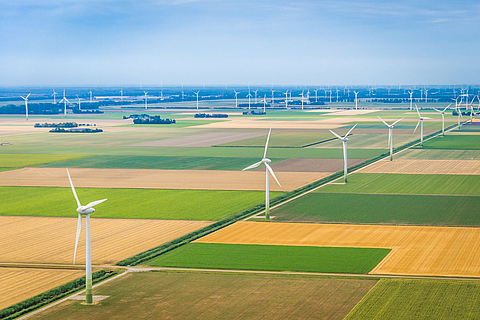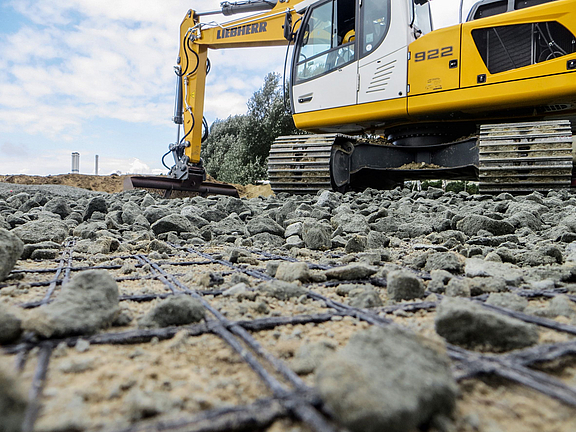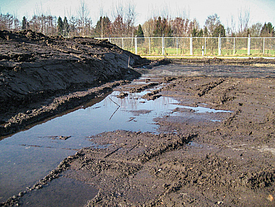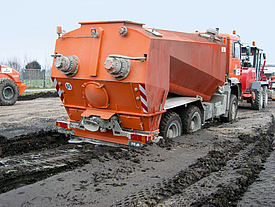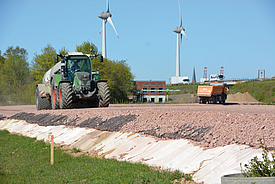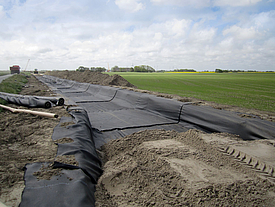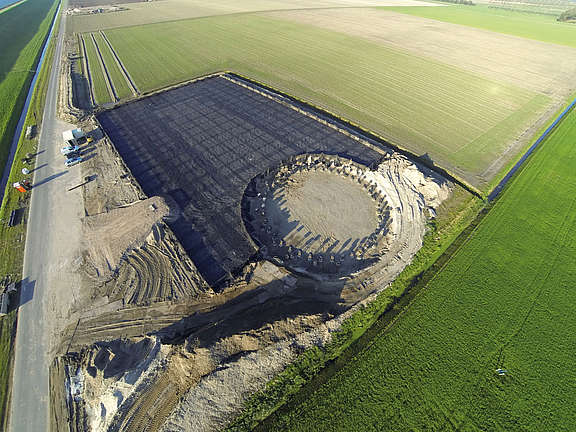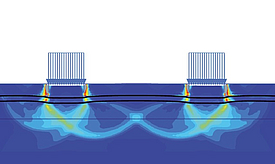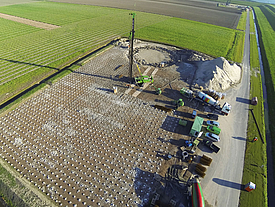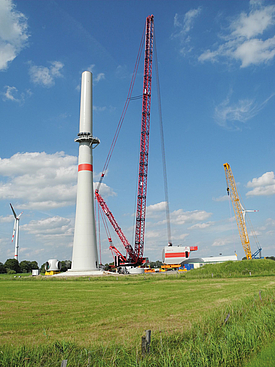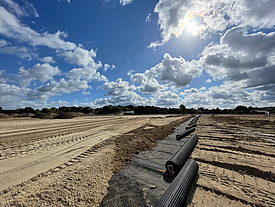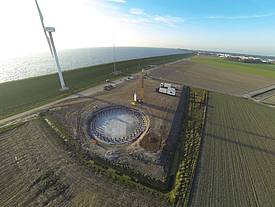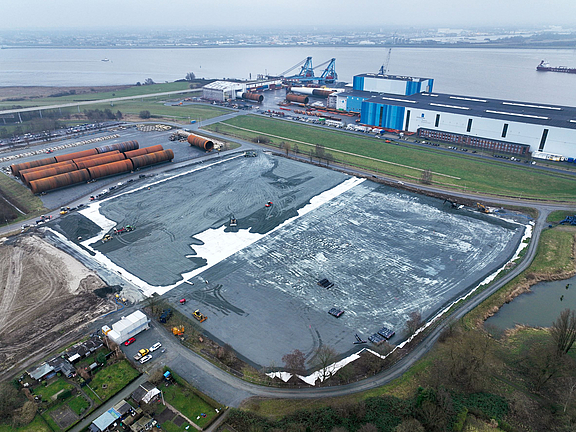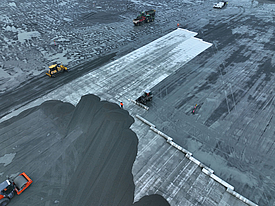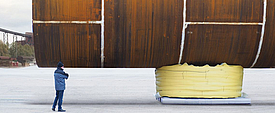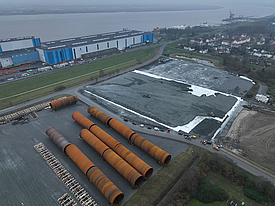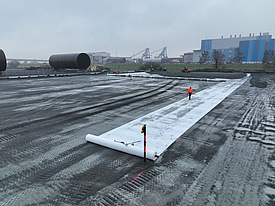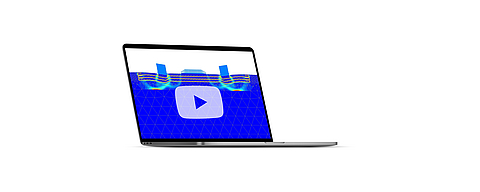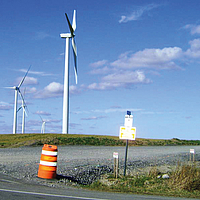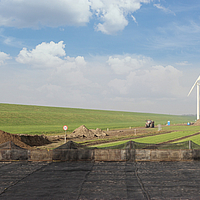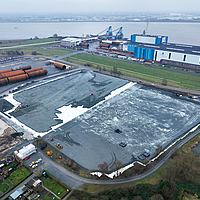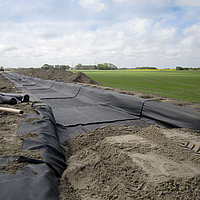Geogrid-reinforced access routes &
Crane platforms in wind farm construction
Improve the subsoil with geotextiles for wind energy development
Wind energy has become an important renewable energy source for achieving climate protection goals and independence from fossil fuels.
A major challenge in the construction of wind turbines and wind farms are the low load-bearing subsoils used for parking areas, access roads and logistics areas for the heavy components and construction vehicles. Our planning engineers have therefore made it their business to find the right solution for each project, taking into account resource conservation and structural stability. Geotextiles and geogrids can provide significant support in making the construction of access routes and assembly and crane parking areas safer and more sustainable. In addition, their use can reinforce areas for the temporary storage of heavy components such as monopiles.
You can count on our outstanding geogrids, geofabrics and system solutions whenever low-bearing substrates need to be driven over. Benefit from our many years of experience, state-of-the-art production and quality assurance as well as our project-specific engineering services. We look forward to supporting you in the planning, calculation, costing and execution of your projects relating to the construction of wind turbines and wind farms.
Wind farm access roads
Base reinforcement with Geosynthetics
During the construction of wind farms, it is not only the stability of the cranes and turbines that is of great importance, but also the securing of the access route. In order to transport the various components of the wind turbine to their final locations, existing country and forest roads are often used. These often have only a low load-bearing capacity and are not suitable for driving heavy construction and transport vehicles. Our geogrids and geotextiles can be used wherever temporary or permanent soil reinforcement is required. By using geosynthetics, the load-bearing capacity can be increased and trafficability ensured. Compared to conventional construction methods such as lime or cement stabilisation, our Basetrac and Fortrac geogrids are highly economical, sustainable and extremely durable. In the case of a temporary solution, they can also be easily dismantled thanks to their robustness.
Challenge planning
- Reduction in required base course thickness
- Avoiding the loss of base course material
- Increasing the load capacity
- Reduction of the rut depth
- Reduced impact on the soil as a protected resource
Crane working platforms and assembly areas
Reinforcement of highly loaded engineering structures
Assembly and crane work platforms represent a major challenge in the construction of wind turbines. The intended locations for the construction of the working platforms often only have a very low load-bearing capacity, so that the structural stability of the cranes and heavy construction equipment is not guaranteed due to the high loads and centred effects. Complex geotechnical design is required to meet the high safety standards in wind farm construction. The low permissible total settlement and angular torsion for mobile and crawler cranes of less than 2 % also place high demands on the planning and execution of the foundation surface. The use of geosynthetics as horizontal reinforcement significantly improves the structural stability and serviceability of highly loaded surfaces. The combination with vertical support elements can increase this even further.
Benefits of horizontal reinforcement
- Maximum safety thanks to high-tensile and low-creep reinforcement layers in longitudinal and transverse direction
- Increased base failure safety due to increased load distribution angle and balancing of the forces
- Compensation of inhomogeneous subsurface conditions and reduction of unacceptable differential settlements
- Redistributed vertical loads from the working platform and spreading forces
Storage areas and support pads for heavy components
Geotextile stabilisation of subsoils with low load-bearing capacity
In addition to areas for the construction of wind turbines and access roads, interim storage for heavy components is always needed during the construction of onshore and offshore wind farms. With our geotextile solutions, subsoils with low load-bearing capacity are improved so that even extremely heavy components such as monopiles for offshore wind turbines can be stored. The textile soil reinforcement replaces costly soil replacement or other conventional construction methods for soil stabilisation.
The Fortrac Heavy Load support pad is a flexible alternative to supports made of steel and concrete. The system of Fortrac geogrids, fabric and local soils or slags as fill material is designed for the storage of extremely heavy components.
Benefits
- Safe support of extremely high component loads through the use of high-tensile geotextile reinforcement products
- Geotextile-reinforced bearing surfaces can be loaded immediately after completion
- Reduction of differential settlements even in challenging subsoil conditions
- Very good trafficability thanks to the ductile and at the same time low-deformation system behaviour
The HUESKER Services
Established design methods and many years of experience
HUESKER's services begin with individual advice in the planning phase and end with support during implementation on site. Our experienced specialists carry out structural stability analyses using analytical and numerical methods in 2D and 3D. In this way, ecologically and economically sensible and safe project solutions are developed together with you. Find out more about HUESKER Services!
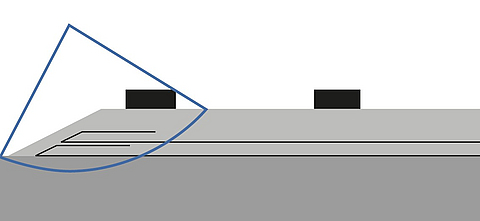
Slope failure investigation by means of analytical calculation methods
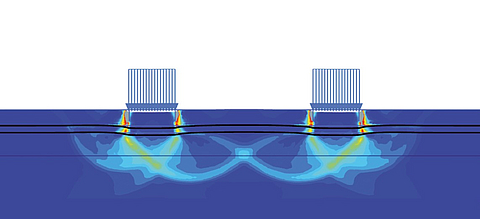
Failure mechanism represented by deviatoric shear stresses (FEM).
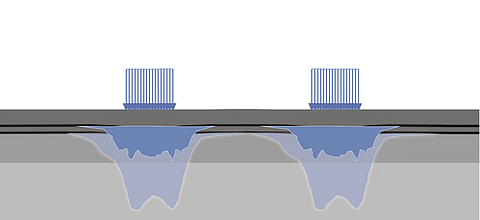
Tensile force distribution in the horizontal reinforcement layers
Our services at a glance
Technical advice and dimensioning for your individual challenge
Individual installation plans as well as installation sketches and instructions
International knowledge transfer of best practice solutions and techniques
Certificates and approvals such as BAM, BAW, BBA, IVG and SVG
Site instructions and provision of installation aids
Suggested texts for calls for tenders
Finite-Element-Method
Discover our VideoCast about FEM
The finite-element-method (FEM) is a numerical procedure used in strength and deformation investigations. HUESKER uses the method, among other things, to investigate the complex interrelationships of high and alternating stresses on crane footprints. Our VideoCast shows how the finite element method is applied in the analysis of geosynthetic reinforced structures.
Geosynthetics in use
Interaction flexible and robust
The use of geosynthetics in base course reinforcement is versatile. Our geogrids and geotextiles fulfil functions such as reinforcement, separation and filtering, so that the load-bearing capacity of the base course is increased and an improvement in trafficability is created. In addition, rut depths and the thickness of the base course can be significantly reduced. Fortrac geogrids, Stabilenka and Stabilenka Xtreme geofabrics and Basetrac Duo-C geocomposites are particularly suitable for use in wind farm construction, where HUESKER specialises in the reinforcement of access routes and the creation of safe crane working platforms and assembly areas. Our Fortrac geogrids bring with them a very high interaction flexibility that only flexible geosynthetics possess.
Good interaction flexibility is characterised by the perfect interplay of macro-, meso- and micro-interlocking as well as a high adaptability to the soil. Due to the increased contact area, the composite behaviour or the interaction between soil and reinforcement improves significantly.
Composite flexibility
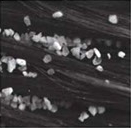
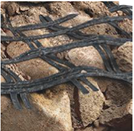
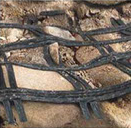
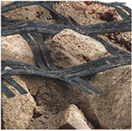
Project examples

The Basecalculator
The BaseCalculator, available online, calculates the required base course thickness for traffic areas for you. With just a few clicks, the software provides you with suggestions for selecting the right HUESKER geosynthetics and provides information on saving base course material. We offer this service free of charge and without the need for time-consuming registration.




